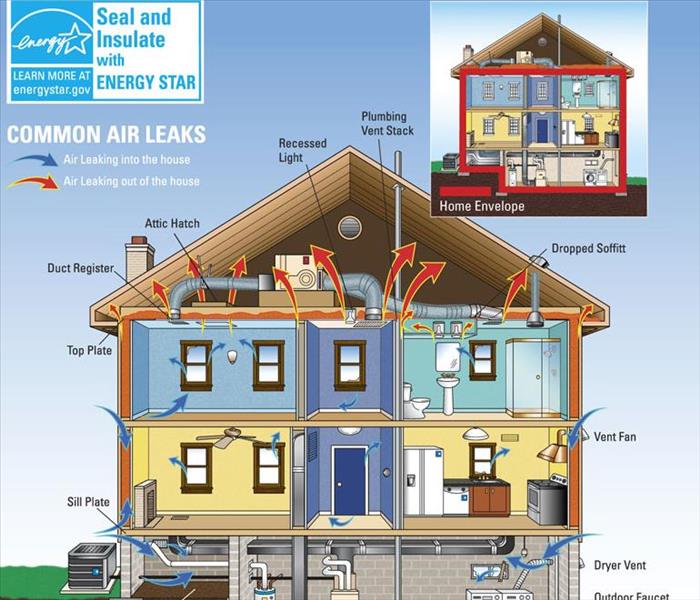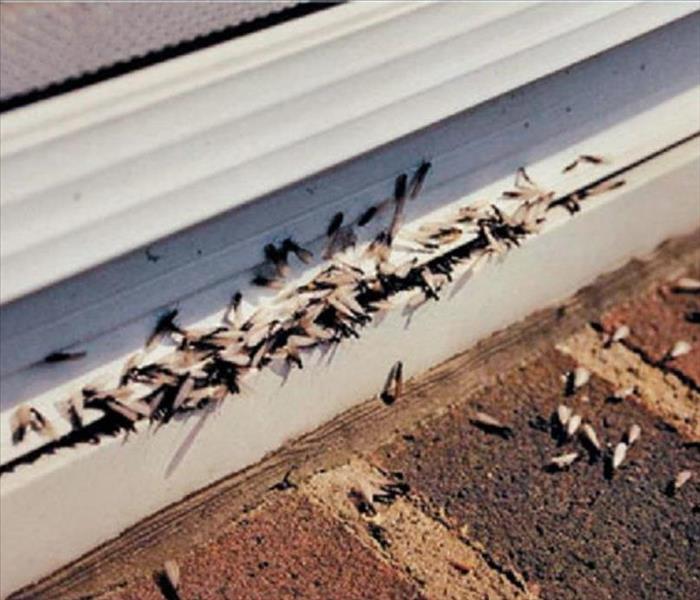What to Expect from a Home Energy Audit, Fire Damage in Woowich NJ, Fire Damage in Washington Township NJ,
10/11/2017 (Permalink)
 What to Expect from a Home Energy Audit, Fire Damage in Woowich NJ, Fire Damage in Washington Township NJ,
What to Expect from a Home Energy Audit, Fire Damage in Woowich NJ, Fire Damage in Washington Township NJ,
Specially trained and certified technicians will assess your home from top to bottom. The technician will take inventory, report on the current conditions in your home and will test for:
- Health and safety check (carbon monoxide levels, moisture, and indoor air quality problems)
- Overall comfort level (cold/hot spots, indoor air quality stuffiness/stale odors)
- Air sealing opportunities
- Insulation levels
- Heating system efficiency
- Cooling system/central air conditioning efficiency, if applicable
- Domestic hot water system efficiency
Certified technicians use a number of diagnostic tools during your Home Assessment including the Carbon Monoxide (CO) Analyzer, which is an important health and safety tool. Your contractor will identify any potential health and safety issues during the initial audit (assessment). Any issues that arise will need to be addressed before any energy efficiency improvements can be made through the program.
After the home energy audit, you will receive a report listing recommended measures, along with financial incentives available to help you pay for the recommended improvement work. The eligible energy efficiency upgrades must meet specific efficiency requirements. Here is the NJ Energy Audit Website, for Residential, Commercial, and Industrial incentives:
http://www.njcleanenergy.com/residential/programs/home-performance-energy-star/what-expect-home-energy-assessment
Termites can cause severe damage to Properties
4/25/2017 (Permalink)
 Termites can cause severe damage to Properties
Termites can cause severe damage to Properties
Termites can cause severe damage to Properties
Although termites are ecologically beneficial in that they break down detritus to add nutrients to soil, the same feeding behaviors that prove helpful to the ecosystem can cause severe damage to human homes. Because termites feed primarily on wood, they are capable of compromising the strength and safety of an infested structure. Termite damage can render structures unlivable until expensive repairs are conducted.
Structural property damage
Properties constructed primarily of wood are not the only structures threatened by termite activity. Properties made from other materials may also host termite infestations, as these insects are capable of traversing through plaster, metal siding and more. Termites then feed on cabinets, floors, ceilings and wooden furniture within these homes.
Because termites are often not identified before considerable damage has occurred, it is advised that homeowners experiencing a termite infestation contact a pest control professional before attempting to address the problem on their own. Professionals will conduct an inspection in order to correctly identify the problem and will then discuss possible avenues of treatment with homeowners.
Signs of subterranean termite damage
Subterranean termites dwell underground in loose, damp soil. Although subterranean termite species in Africa are famously aggressive and known for the obvious mounds above their colonies, signs of subterranean termite damage within the United States are much less obvious.
Interior damage may not become apparent until infestations are full-blown. Termite damage sometimes appears similar to water damage. Outward signs of termite damage include buckling wood, swollen floors and ceilings, areas that appear to be suffering from slight water damage and visible mazes within walls or furniture. Termite infestations also can exude a scent similar to mildew or mold.
Subterranean termites also access above-ground food sources through mud tunnels they create from saliva, mud and feces. These tunnels are located near the foundation of infested homes.
Signs of drywood termite damage
Drywood termites build their colonies within wooden structures on which they feed. They can be found inside of walls or furniture. Drywood termite infestations may only become apparent after a colony has burrowed so deeply into an infested item that the veneer cracks and the maze-like tunnels beneath become visible. Such damage is common in antique furniture pieces. Should this occur on new furniture or the floors or walls of your home, contact a professional to discuss the severity of your infestation, as well as prevention and treatment options.
- Get rid of dead trees and stumps around your yard. Decaying wood is top food source for termites and can attract a colony of hungry termites. [5]If you keep a lot of firewood or spare construction materials on hand, keep them as far away from your house as possible. If you bring this wood into your house, make sure to look for signs of termite presence like holes in the wood or hollowed feeling or sound.
Inspect common termite entry points. The most common way they get into your house is through wood to ground contact, such as a door frame, deck posts, or wood support beams. Address these spots by examining them for signs of termites regularly, get rid of any standing water in the area, and treat the wood with termite prevention like soil treatments that repel termites.
- Avoid spreading mulch too close to your home. You can have mulch in your home but you'll want to avoid putting it anywhere that it may touch your siding or foundation. Mulch creates moisture in the soil and prevents woods from growing, both conditions termites seek. This also includes your plants. Woody shrubs that touch the wood foundation or siding of your house can help attract termites and also help hide their presence.
Install termite shields. This can be especially helpful if you are currently constructing a home. These are metal shields put along the foundation of your home to deter termites. These should be made of a non-corroding metal with no gaps. This can prevent termites from getting access to the wood foundations or structures of your home.
 What to Expect from a Home Energy Audit, Fire Damage in Woowich NJ, Fire Damage in Washington Township NJ,
What to Expect from a Home Energy Audit, Fire Damage in Woowich NJ, Fire Damage in Washington Township NJ,






 24/7 Emergency Service
24/7 Emergency Service
